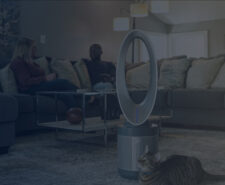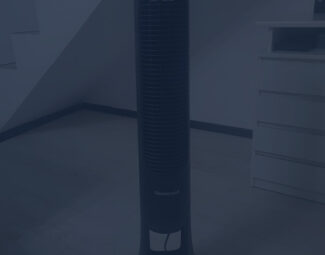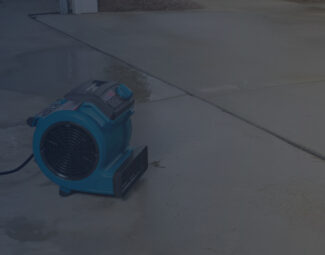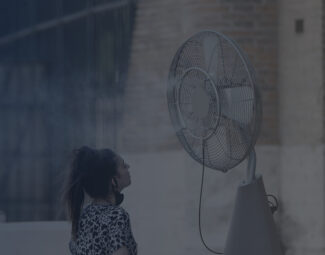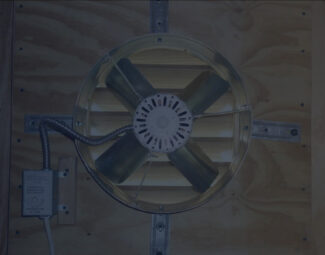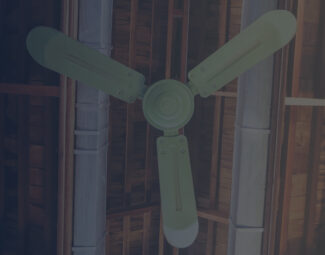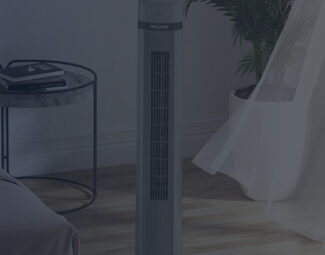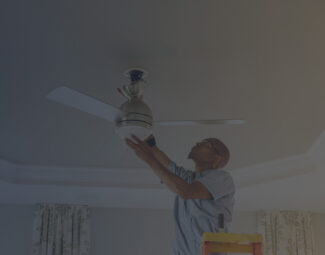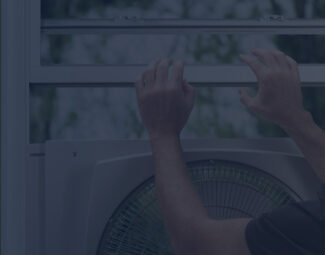T he unique construction of the tower fan combined with its efficiency when it comes to airflow distribution makes it one of the most sought-after options to cool off when the heatwaves come. Considerably cheaper than an AC (although keep in mind that the AC is still the go-to if you seek actual cooling as it lowers temperatures indoors), with time it has managed to comprise new functions, technologies, and features, all of them adding to the product’s usability. If you want to get one, you might feel overwhelmed by the large selection available, so in the following, we will try to simplify your effort by discussing the essential aspects you need to look into.
If your mind is made up and you want to buy a qualitative, long-lasting product, check out the best tower fans ranked and rated according to their performance.
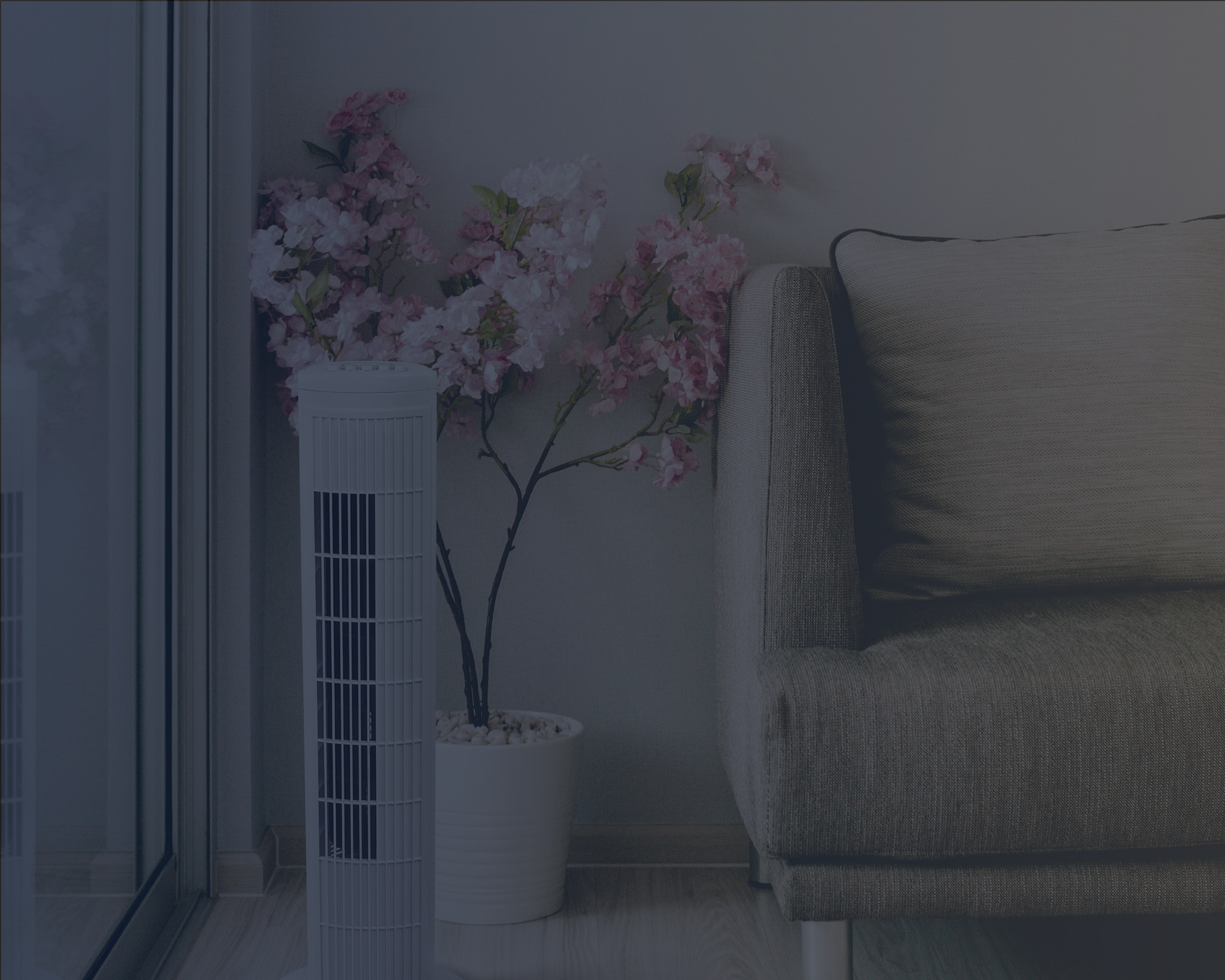
Tower Fan on the Floor in Front of a Vase with Pink Flowers in Living Room
Tower Fan 101
Let’s begin with the basics. By definition, a tower fan is an appliance that provides cooling capabilities and flaunts a distinctive design, the narrow and tall profile making it a standout in any décor. As opposed to an AC unit, however, it does not cool the air but rather creates airflow, helping you cool off in a more energy-efficient manner than the aforementioned system type. While there are multiple types of fans that all serve the same end purpose, what makes the tower fan more desirable, aside from the unique space-saving design, is that it is accompanied by more features and options that add to its usability.
So how does a tower fan work exactly?
As aforementioned, it does not cool the air per se. Fans, regardless of the type we are talking about, rather creating airflow and circulating the air to help cool you off. As the breeze hits your skin, you will instantly feel relief from the overwhelming heat, regardless of what temperature the indoor thermometer indicates.
With most products, the electric motor is the part that helps them function and spins the container where the blades are located. Generally, the blades run the full length of the unit so that breeze power is optimized. There can even be the option of oscillation, its purpose being to maximize fresh air distribution across the room and ensure larger coverage.
What types of tower fans can you encounter when searching the market?
There are three main types that you can pick between, each with its defining characteristic to set it apart. Before you start looking into features, you must consider what type best suits your needs as this is the proper starting point. The three types include:
- 1. Bladeless: As suggested by their name, these fans lack the classic blades we are accustomed to. This specific design trait makes them better suited for those who want increased safety, being recommended for homes where small children and pets reside.
- 2. Oscillating: The oscillating motion of the fan grants a vaster spread of the airflow so that you cool off no matter where you are in the room. The higher the oscillation degree the better as it implies a more ample coverage of the room.
- 3. Ceramic: As ceramic is a material that withstands heat and pressure, you will generally find that fans that cool and heat are usually made with it. Moreover, it is the material used for the manufacturing of tower fan heaters that are specially designed to serve as heating solutions during cold weather.
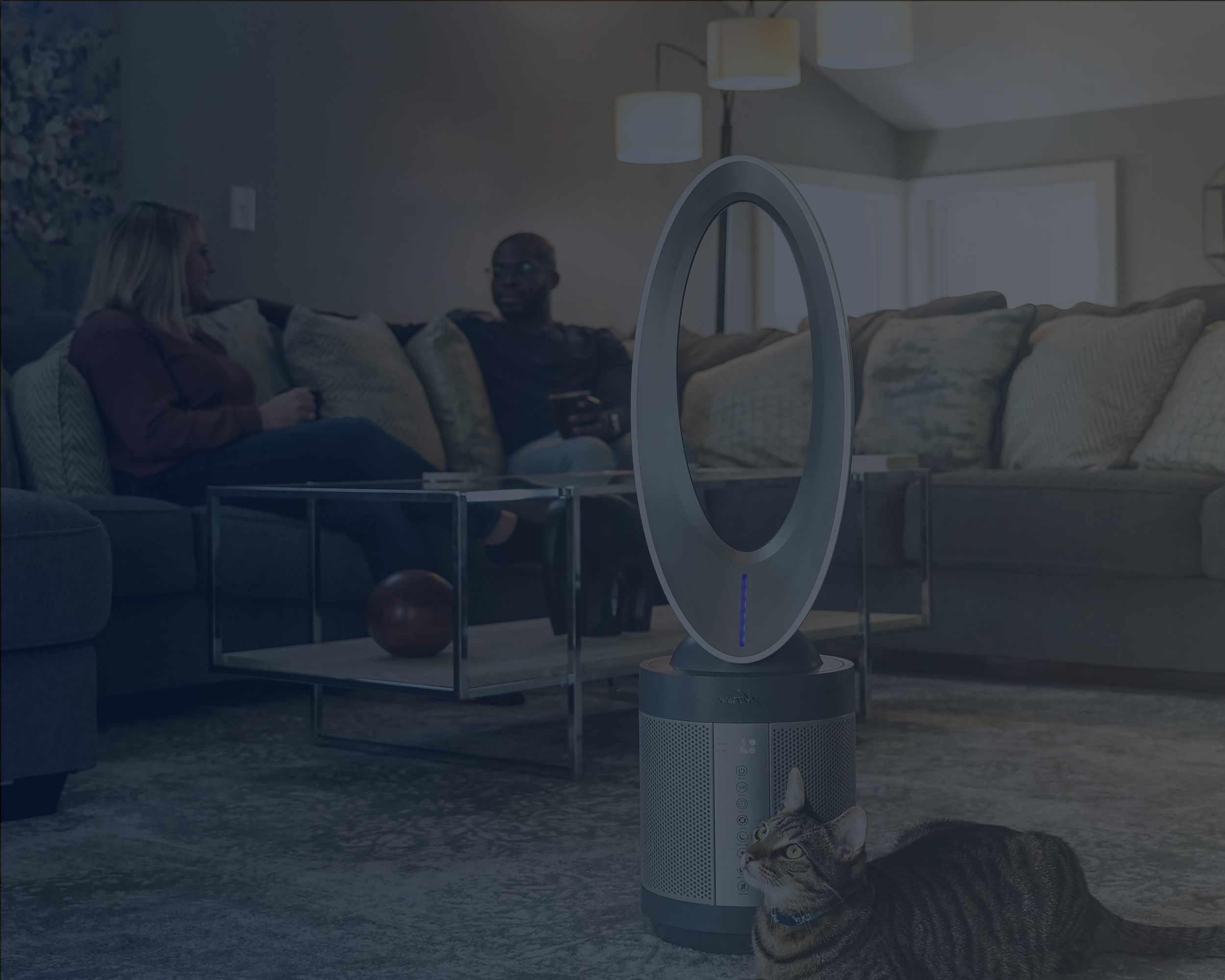
Cat Sitting on Carpet in Front of Bladeless Tower Fan
What are the pros and cons of tower-style fans?
To every product out there you have a list of pros and cons, and we are strong believers in the fact that before you jump in and make any purchase, you should be presented with the ups and downs of the acquisition you are about to make. This way, you are aware of the issues and limitations that exist from the get-go.
Benefits:
- Multiple features: No other type of fan comes close to the tower-style unit when it comes to features. The latest technologies and functions are integrated into these products, as you will immediately learn in the buying guide below, which makes them more versatile and desirable.
- Safe: The encasing of the blades ensures that even when knocked over, the fans don’t pose a danger. For added safety, we do recommend that you opt for a bladeless fan like the Dyson AM05 Hot & Cool as it fully eliminates any potential for someone getting hurt.
- Wide selection: With companies competing constantly to attract customers and release newer and better products each year, sometimes even more often than that, it comes as no surprise that there are plenty of options to pick from. This spells good news when it comes to the financial aspect as well seeing how there are variants available for every budget.
- Easy to clean: Maintenance is a cinch as simply wiping off the exterior and brushing off the dust on the grill (how you clean the fan differs slightly depending on the actual type) suffice to keep it clean and working on par.
- Compact design: The base is small in size and while tall, the fan doesn’t measure that much in height either, as opposed to pedestal fans that can be bothersome to place because of their design. Small enough to fit in any corner, it is a viable option regardless of how much or how little free space you have available.
Downsides:
- Don’t actually cool: This is a downside that works for all fans, not only tower-style models. These appliances don’t lower the temperature but rather provide airflow to help you feel cool regardless of how hot it gets. For actual cooling and lower temperatures, an air conditioner is still your best guess.
- Can get noisy: While not all models are loud, some can get pretty distracting, which makes them bothersome to be in the same room with.
Buying Guide
1. Design:
How much space does it occupy? How heavy is it? Are there any handles to grab onto as you carry it from one area of the house to another? We advise that you not overlook these design aspects when you look for the right product as they impact usability and convenience in use in the long run. To make sure that the product’s design never gets in the way but rather helps you, opt for a model that is as compact and lightweight as possible, and that comes with handles for easy relocation.
2. Noise output:
Regardless of the room, whether it is the bedroom, nursery, kitchen, or living room, what is a certainty is that you wouldn’t want the fan to make too much noise when it runs. Otherwise, it becomes a distraction and you won’t have a fun time when turning it on. While these products do tend to be noisier as opposed to pedestal fans, for example, there are still more than enough discrete selections available. You just have to take your time and carefully look for the right one.
If you want a discrete unit, we recommend the Honeywell HY-280 QuietSet that produces only 38 dB on the lowest speed setting.
3. Multiple operating speeds:
The more options you can pick from when it comes to the power of the airflow it pushes across the room the better as you can customize its performance to your needs and preferences at any given moment. The standard is 3 selectable speeds, yet there are plenty of models that feature more than this.
With a total of 10 settings to pick from, the Dyson AM07 is the product you need if you want to have full control over the airflow of the fan.
4. Oscillation:
This is a crucial function for the tower fan as it ensures an improved airflow distribution in the room. A wide oscillation makes sure that no corner of the room is left unattended so that no matter where you sit, you feel the cooling breeze on your skin.
5. Timer:
As you can program it to shut off, you can go ahead and start it before you leave for work as it will turn off at your chosen time. This feature is a money-saver as it limits the unit’s operation to what is strictly needed. Moreover, if you are the forgetful type, it ensures you won’t ever accidentally leave the fan on when you go for a shopping spree or visit a friend.
6. Humidification:
It is an atypical feature, but some models do raise indoor humidity during their operation. With a tower fan that is able to add moisture to the air, there is no need to separately use a humidifier. However, you should use a hygrometer to see how big of a difference the function makes. In case it raises humidity but not enough to upkeep proper RH, then you have to add a room humidifier into the mix too.
Check out the NewAir AF-310, a fan that not only circulates the air indoors but helps add moisture into the room so that you won’t suffer the repercussions of low humidity.
7. Heating capability:
If the model you opt for has heating capabilities, it is viable for year-round use. Moreover, you are spared the money that you would have otherwise spent on acquiring a heater to use in the room when winter comes.
Flaunting a bladeless design that makes it safe around kids and able to provide cooling and heating, the Dyson AM05 Hot & Cool is as tech-forward as these products can get.
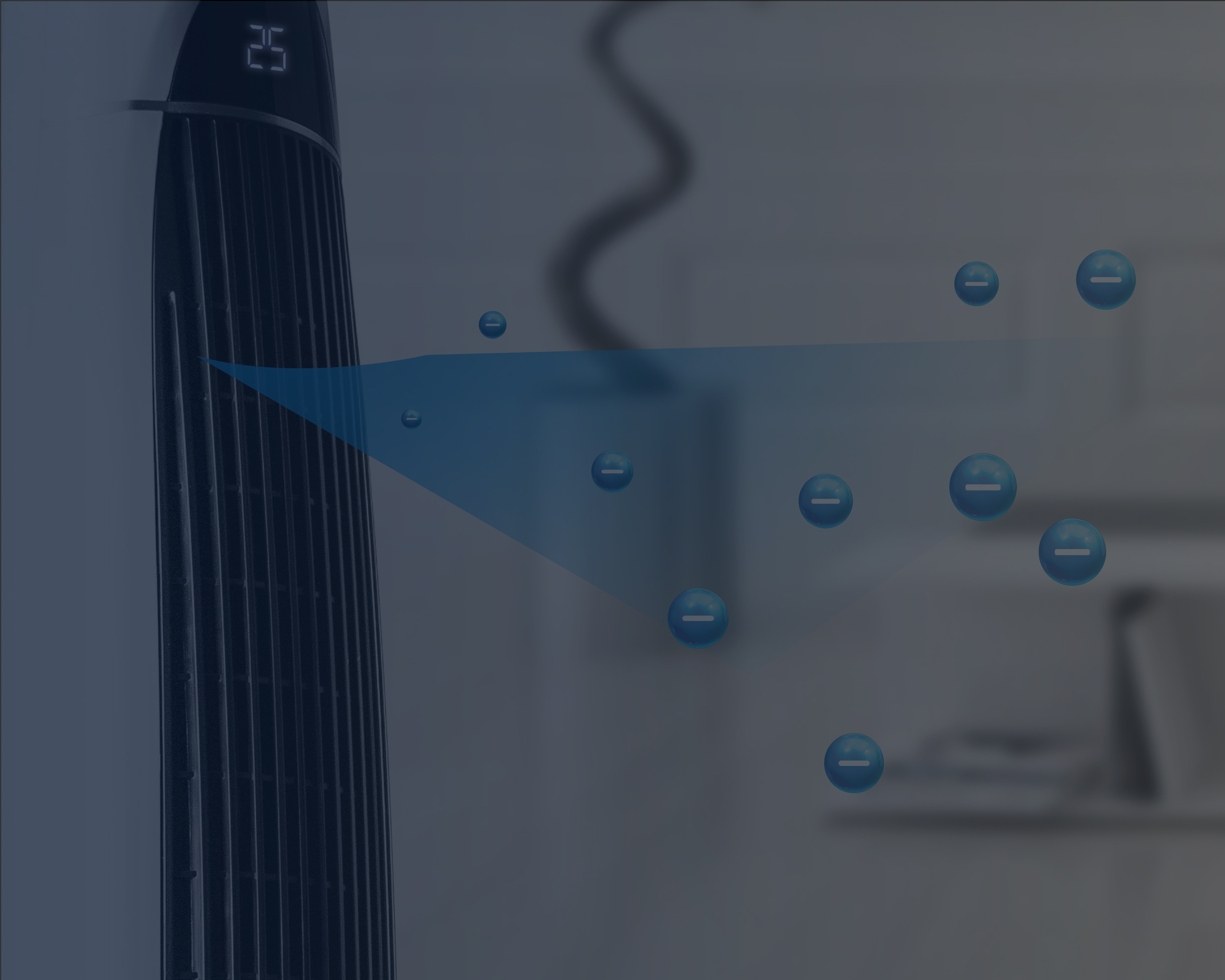
Tower Fan with Ionizer Releasing Negative Ions into Room
8. Ionizer:
The ionizer releases negative ions into the air, which attach to pollutants encountered in the air and make them drop to the ground because of the extra weight. As the particles no longer linger in the air, the fan helps improve indoor air quality as well. Make sure to keep your eyes out for this air purification feature as it does wonders for allergy sufferers, alleviating their symptoms.
9. Automatic shut-off:
This is a safety feature we urge you to look into as it can be a lifesaver. When the fan gets tipped over, when malfunctions appear, or when the internal temperature rises dangerously, the automatic shut-off activates and turns the unit off to ensure no one gets hurt and to prevent damage to the air circulating system if possible.
10. Energy efficiency:
The power draw indicates how energy-efficient the fan is. You aim to acquire a model that provides the powerful airflow you need without drawing too much power when it runs so that you can run it 24/7 without spending a fortune on the bills.
Since it consumes only 31 watts on the lowest speed setting, the Honeywell Kaz HY-023 makes for a cost-efficient solution to fend off the torrid heat.
11. Manufacturing brand:
Yes, it does matter quite a lot who was behind the design and production of the fan as some brands have a legacy and tradition to their name that shows their products are generally better performing and more lasting as opposed to what the market generally offers. When it comes to tower fans, the brands that we advise you to acquire from are Dyson, Honeywell, Ozeri, Vornado, Holmes, DeLonghi, and Lasko.
12. Remote:
The only accessory that actually matters, the remote lets you change settings without moving an inch from your current position in the room. While it doesn’t affect the operation of the fan, it does increase the convenience of using it, so it is worth having it at your disposal.
13. Warranty length:
Indicative of the product’s lastingness, the warranty is an aspect you should look into regardless of the purchase you make. The longer the warranty, the better as it means that it will be serviced for free in case defects appear for a longer period.
Make Sure You Size It Right
Even though we talk about this aspect last, in terms of importance for your future acquisition, this is the first aspect you must look into. Without estimating properly and sizing the fan right, it won’t ever rise to your expectations as the airflow it provides won’t suffice. Sizing depends on two elements – air velocity and the amount of floor space the fan needs to supply air. For a smaller-size space, use a tower fan with lower air circulation. Since you don’t need high circulation, it would be pointless to acquire a large-size model that makes a lot of noise when it runs. For a large-size space, you should look into a fan with a powerful airflow so that it handles the area it needs to cover.
Final Thoughts
By this point, you are informed of what makes a quality tower fan, so deciding on a model won’t be as confusing. Whether you prefer the safe operation granted by the bladeless Dyson AM07 or you want a year-round model like the DeLonghi TCH7090ER SafeHeat that offers cooling and heating, what is a certainty is that you know to make a choice which complies to your expectations and standards. Take your time, read as many reviews as you need here, compare the best tower fans to each other, and you will end up with a product that will last for years and keep you cool no matter how hot it gets.

